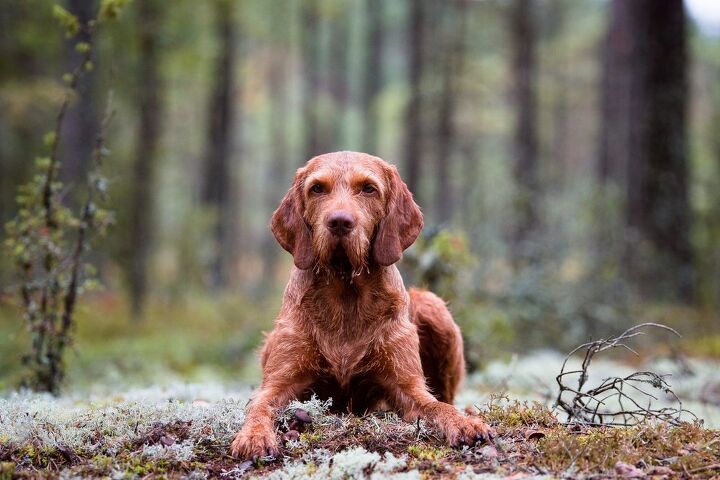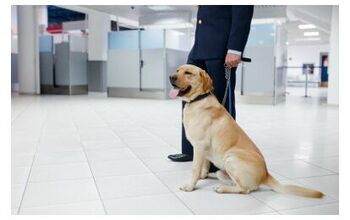Wirehaired Vizsla


About Wirehaired Vizsla
Also known as the Hungarian Wirehaired Vizsla, this breed is known for its energy, stamina, and its reddish coloration. This breed is sometimes confusing because there is another breed called the Vizsla which has a short, close-lying coat. Both breeds are known for their hunting prowess and their intelligence – they also make good family pets.
Also known as the Hungarian Wirehaired Vizsla, this breed is known for its energy, stamina, and its reddish coloration.
The origin of this breed can be traced back to the 1930s when a hunter named Vasas Josef decided to develop a new breed using his kennel called Csaba Vizsla. With help from the Hungarian Vizsla Klub and kennel owner Gresznarik Lazslo, Josef set about creating a breed that had the same color and major characteristics of the Vizsla but the heavier frame and protective coating of the German Wirehaired Pointer. This breed was developed for its pointing and retrieving skills as well as its ability to excel in the extreme winter conditions found in upland Hungary. The Wirehaired Vizsla was also developed as a family companion.
The Wirehaired Vizsla is a direct descendant of the Vizsla and the German Wirehaired Pointer. The Wirehaired Vizsla was designed to have the color and characteristics of the Vizsla with the heavier frame and protective coating of the German Wirehaired Pointer.
The Wirehaired Vizsla is a medium-sized dog and should be offered a dog food diet that is formulated for dogs of that size. This breed is also highly active, so you may want to consider an active breed formula to ensure that its daily energy needs are met.
The Wirehaired Vizsla is an intelligent dog that was developed for its pointing and retrieving skills.
The Wirehaired Vizsla is an intelligent dog that was developed for its pointing and retrieving skills. This breed should be started on training and socialization from a young age and they need plenty of daily exercise to prevent the development of problem behaviors. This breed is considered to be of average trainability so you shouldn’t have a problem as long as you maintain a firm and consistent hand in training and use positive reinforcement-based training methods. The Wirehaired Vizsla can be trained for a variety of dog sports including agility, tracking, pointing, retrieving, and obedience.
The Wirehaired Vizsla is a medium-sized breed with males standing 23 to 25 inches tall and weighing between 45 and 65 pounds. Females stand 21.5 to 23 inches tall and weigh 40 to 55 lbs.
The Wirehaired Vizsla is a gentle and loving breed, though it can be a little high-strung at times. This breed can be affectionate with family, forming close bonds with its owners, including children. The Wirehaired Vizsla is typically a quiet breed, barking only if provoked, and they do not tend to be aggressive. This breed requires a lot of attention and quality time with family – he is likely to develop problem behaviors if left along for too long, especially if he doesn’t get enough exercise. This breed is good around children but they may not be compatible with household pets due to their hunting instincts.
For the most part, the Wirehaired Vizsla is considered a healthy breed. This is partially due to the fact that its history includes outcrossing with several other breeds which helps to reduce the instance of inherited health conditions. Like all dogs, however, the Wirehaired Vizsla is prone to a few minor health conditions including hypothyroidism, inflammatory bowel disease, hip and elbow dysplasia, and ear infections. This breed may also be affected by Addison’s disease, Cushing’s Disease, and epilepsy.
The average lifespan of the Wirehaired Vizsla is between 12 and 15 years.
The Wirehaired Vizsla is an active and energetic breed that requires a great deal of mental and physical stimulation. This breed needs a long daily walk and would also benefit from some active playtime during the day or time spent in a fenced yard. These dogs also do well when trained for dog sports like agility or for hunting.
This breed can be affectionate with family, forming close bonds with its owners, including children.
The Wirehaired Vizsla was entered into the AKC’s Foundation Stock Service in 2008 and was approved for competition in 2009. The breed was then moved to the Sporting Group in 2011.
The most noticeable difference between the Vizsla and the Wirehaired Vizsla is the condition of the coat. The Vizsla has a short, close-lying coat while the Wirehaired Vizsla has a slightly longer, wirier coat. The coat measures between 0.75 and 1.25 inches long and it has a dense undercoat that is water-repellent. This breed typically exhibits pronounced eyebrows and a beard which grows long on either side of the muzzle. Regular brushing and the occasional bath is recommended to keep the coat in good condition.
The average litter size for the Wirehaired Vizsla breed is between 5 and 10 puppies. As is true for most dogs, it is recommended that you start Wirehaired Vizsla puppies with training and socialization as early as possible to prevent the development of problem behaviors.
Photo credit: Shakarrigrafie/Shutterstock ; thka/Shutterstock; eriklam/Bigstock

Kate Barrington is the loving owner of two cats (Bagel and Munchkin) and a noisy herd of guinea pigs. Having grown up with golden retrievers, Kate has a great deal of experience with dogs but labels herself a lover of all pets. Having received a Bachelor's degree in English, Kate has combined her love for pets and her passion for writing to create her own freelance writing business, specializing in the pet niche.
More by Kate Barrington

























